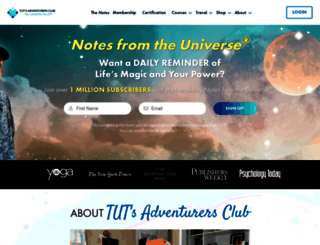TUT - The Universe Talks® - TUT
Page Load Speed
43.9 sec in total
First Response
293 ms
Resources Loaded
21.5 sec
Page Rendered
22.2 sec

About Website
Visit tut.com now to see the best up-to-date TUT content for United States and also check out these interesting facts you probably never knew about tut.com
TUT’s mission is to remind others of life’s fundamental truths: that life is magical, we are powerful, and dreams really do come true.
Visit tut.comKey Findings
We analyzed Tut.com page load time and found that the first response time was 293 ms and then it took 43.6 sec to load all DOM resources and completely render a web page. This is a poor result, as 95% of websites can load faster.